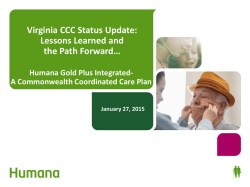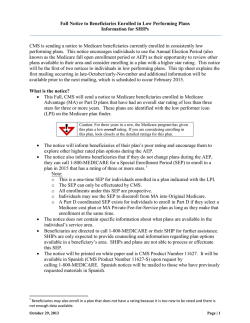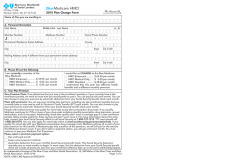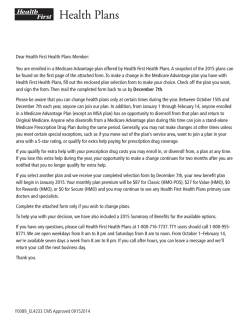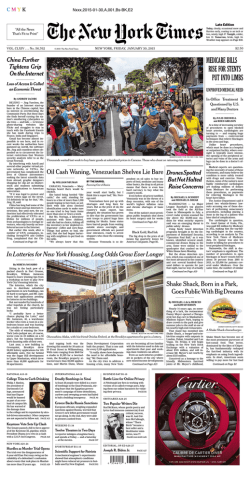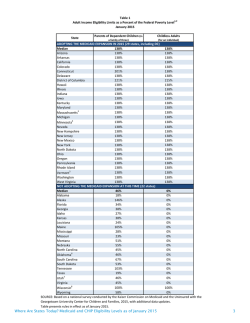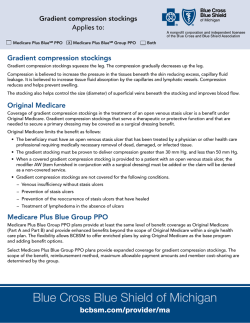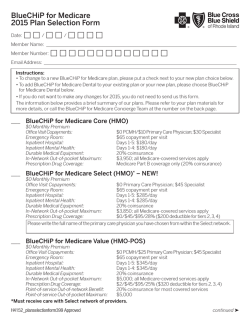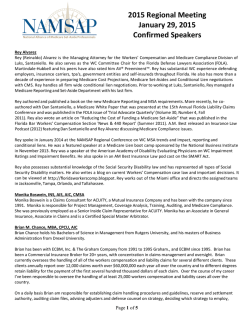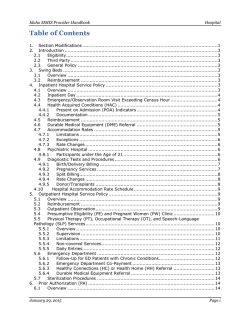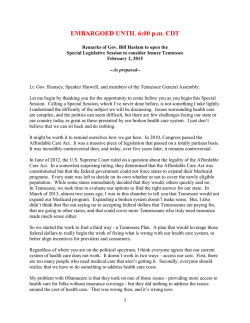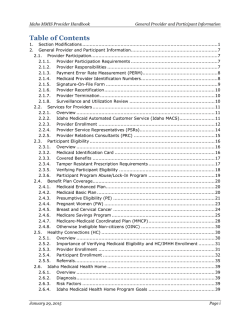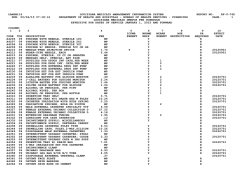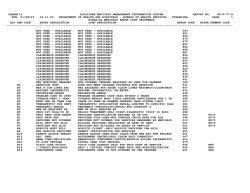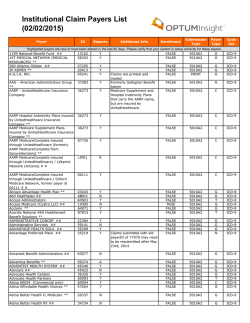
download fact sheet - Center for Health Care Strategies
FACT SHEET | January 2015 Update on Medicare-Medicaid Integration Nearly 10 million people in the United States are eligible for both Medicare and Medicaid. Medicare-Medicaid enrollees, also referred to as dually eligible beneficiaries, often have significant health and social service needs, making them among the nation’s highest-need, highest-cost populations. Because Medicare and Medicaid operate as separate programs, dually eligible beneficiaries often receive fragmented, poorly coordinated care that is not cost effective. Improving the quality and reducing the cost of their care is a key focus for federal and state policymakers. Who are Medicare-Medicaid Enrollees? Medicare-Medicaid enrollees are a diverse group with a range of medical, behavioral health, and social service needs. Most (59 percent) are age 65 and over and are eligible for Medicaid because they are both low income and/or need long-term services and supports (LTSS).1 The other 41 percent of Medicare-Medicaid enrollees are under age 65, and most have chronic illnesses or disabilities. Nearly 20 percent have three or more chronic conditions, and 30 percent have a mental illness.2 Forty-four percent receive LTSS (either home- and community-based or nursing facility services).3 Many have unstable housing situations and do not have access to strong community-supports. Opportunities to Integrate Care Integrating the financing and delivery systems for Medicare-Medicaid enrollees has the potential to improve beneficiary and family experience of care; increase care quality, with a focus on more “person-centered” care; and reduce costs. The Affordable Care Act (ACA) created the Medicare-Medicaid Coordination Office (MMCO) in the Centers for Medicare & Medicaid Services (CMS) to help states achieve these goals through integrated care programs. Financial Alignment Demonstrations: In July 2011, CMS announced two financial alignment demonstration models for states to integrate care: (1) a capitated model; and (2) a managed fee-for-service (MFFS) model. States participating in the three-year demonstrations are seeking to better align Medicare and Medicaid financing and integrate primary and acute care, behavioral health services, and LTSS. These models are designed to improve health care quality and offer a vehicle for states to share in Medicare savings that can result from better integration of care. As of January 2015, six states (CA, IL, MA, NY, OH, VA) have launched capitated demonstrations, two have MFFS demonstrations (CO, WA), and one (MN) signed an agreement with CMS for an alternative model focused on administrative alignments. At least four more states (MI, SC, TX, WA) plan to launch demonstrations later in 2015 (see table). Other Pathways to Integrate Care Many states not participating in the financial alignment demonstrations are pursuing alternative mechanisms to better integrate care for Medicare-Medicaid enrollees, including: Dual Eligible Special Needs Plans (D-SNPs) are a type of Medicare Advantage managed care plan that provide a mechanism for states to better coordinate services for this high-need population. D-SNPs, which must contract with both state Medicaid agencies and CMS, are required to provide a coordinated Medicare and Medicaid benefit package that offers more integrated care than regular Medicare Advantage plans or traditional Medicare fee-for-service. While D-SNPs can provide more integrated care, D-SNP contracts do not require comprehensive blending of Medicare and Medicaid funding or aligned program administration, resulting in enrollees needing to navigate separate systems of care. Several states have enhanced D-SNP contract requirements to include: (1) offering Medicare and Medicaid benefits within a single health plan; (2) creating aligned enrollment, benefit and coverage notifications for beneficiaries and providers; and (3) providing enrollees with a care/service coordinator and a comprehensive provider network to access care. As of December 2014, 38 states (AL, AR, AZ, CA, CO, CT, DE, FL, GA, HI, IA, ID, IL, IN, KY, LA, MA, MD, ME, Advancing access, quality, and cost-effectiveness in publicly financed care | www.chcs.org FACT SHEET| Medicare-Medicaid Integration: Implementation Update MI, MN, MO, MS, NC, NJ, NM, NY, OH, OR, PA, SC, TN, TX, UT, VA, WA, WI, WV) have D-SNPs enrolling more than 1.7 million dually eligible beneficiaries.4 Fully Integrated Dual Eligible Special Needs Plans (FIDE SNPs) are a type of D-SNP created by the ACA to promote the full integration and coordination of Medicare and Medicare benefits – primary and acute care and LTSS – and financing of services, for dually eligible beneficiaries.5 FIDE SNPs use care management and provider networks designed to meet enrollees’ diverse needs. As of December 2014, six states (AZ, CA, MA, MN, NY, WI) have FIDE SNPs enrolling more than 90,000 individuals.6 Managed long-term services and supports (MLTSS) programs have been implemented or are planned by many states to better coordinate acute and primary care, behavioral health services, and LTSS. 7 States may enroll dually eligible beneficiaries in MLTSS programs as a first step to providing more integrated care. Individuals enrolled in a Medicaid MLTSS plan can be encouraged to enroll in that plan’s companion Medicare D-SNP product as a way to provide the greatest opportunity for aligning the services they receive through both programs. EXHIBIT 1: State Implementation of Financial Alignment Demonstrations State Model Start Date California Capitated April 2014 Colorado Managed Fee-for-Service September 2014 Illinois Capitated March 2014 Massachusetts Capitated October 2013 Michigan Capitated March 2015 Minnesota Alternative September 2013 New York Capitated January 2015 Ohio Capitated May 2014 South Carolina Capitated February 2015 Texas Capitated March 2015 Virginia Capitated April 2014 Washington Managed Fee-for-Service and Capitated July 2013 TBD SOURCE: Medicare-Medicaid Coordination Office. Financial Alignment Demonstration website: http://www.cms.gov/Medicare-Medicaid-Coordination/Medicare-andMedicaid-Coordination/Medicare-Medicaid-Coordination-Office/FinancialAlignmentInitiative/FinancialModelstoSupportStatesEffortsinCareCoordination.html. What Lies Ahead? States are taking advantage of unprecedented federal support as they advance alignment of Medicare and Medicaid services for dually eligible beneficiaries. To further this progress, states and their federal partners will continue to refine the opportunities described here and possibly develop other alternative pathways. 1 Medicare Payment Advisory Commission and the Medicaid and CHIP Payment and Access Commission. Data Book: Beneficiaries Dually Eligible for Medicare and Medicaid. January 2015. http://www.medpac.gov/documents/data-book/january-2015-medpac-and-macpac-data-book-beneficiaries-dually-eligible-for-medicare-andmedicaid.pdf?sfvrsn=2. 2 Congressional Budget Office. Dual Eligible Beneficiaries of Medicare and Medicaid: Characteristics, Health Care Spending, and Evolving Politics. June 2013. Available at: https://www.cbo.gov/publication/44308. 3 Ibid. 4 Centers for Medicare & Medicaid Services. SNP Comprehensive Report. December 2014. Available at: http://www.cms.gov/Research-Statistics-Data-andSystems/Statistics-Trends-and-Reports/MCRAdvPartDEnrolData/Special-Needs-Plan-SNP-Data-Items/SNP-Comprehensive-Report-201412.html?DLPage=1&DLSort=1&DLSortDir=descending. 5 Centers for Medicare & Medicaid Services, op cit. 6 Ibid. 7 National Association of States United for Aging and Disabilities. State Medicaid Integration Tracker. December 1, 2014. Available at: http://www.nasuad.org/sites/nasuad/files/December%20Tracker.pdf. Advancing access, quality, and cost-effectiveness in publicly financed care | www.chcs.org
© Copyright 2026
